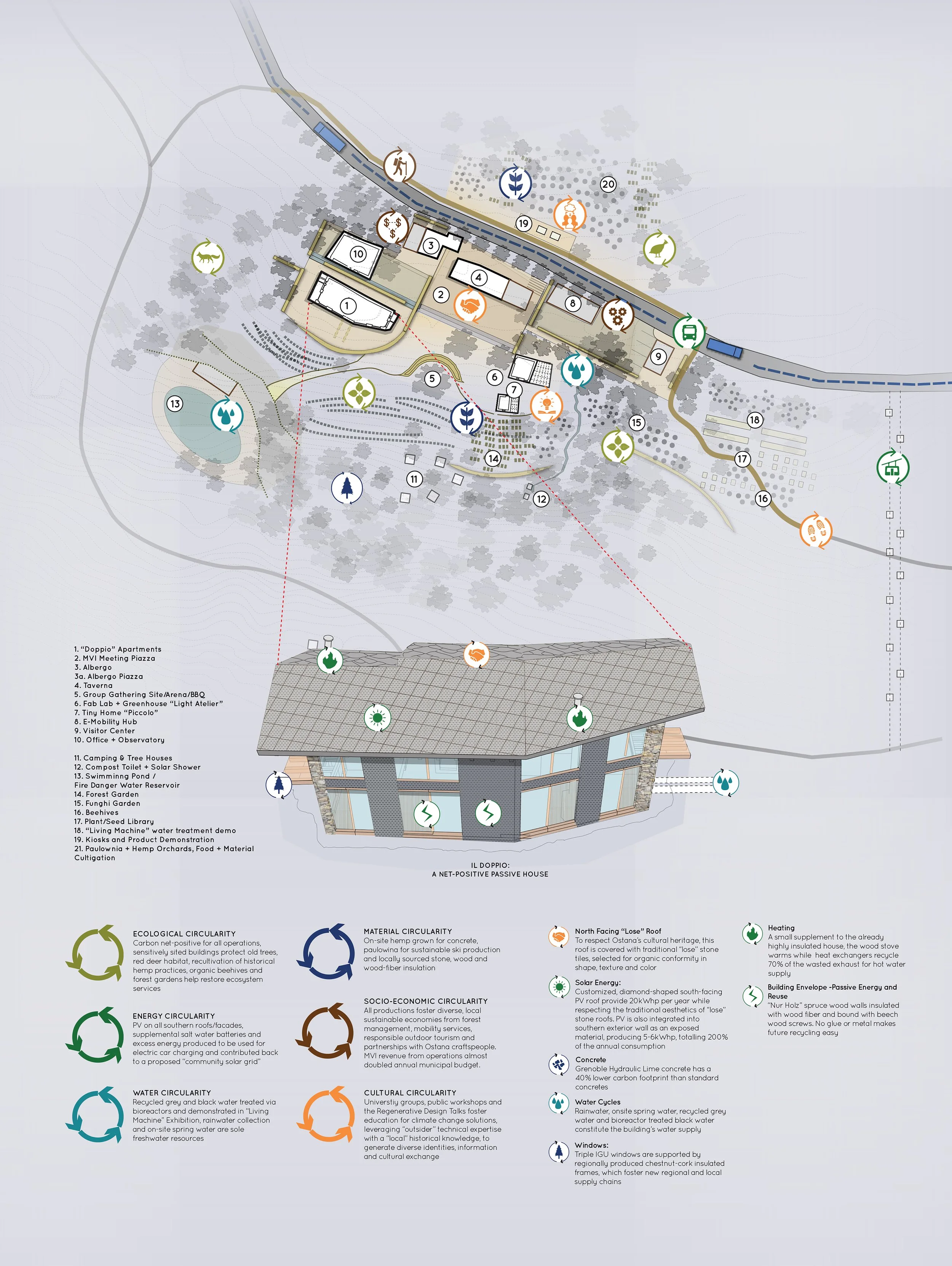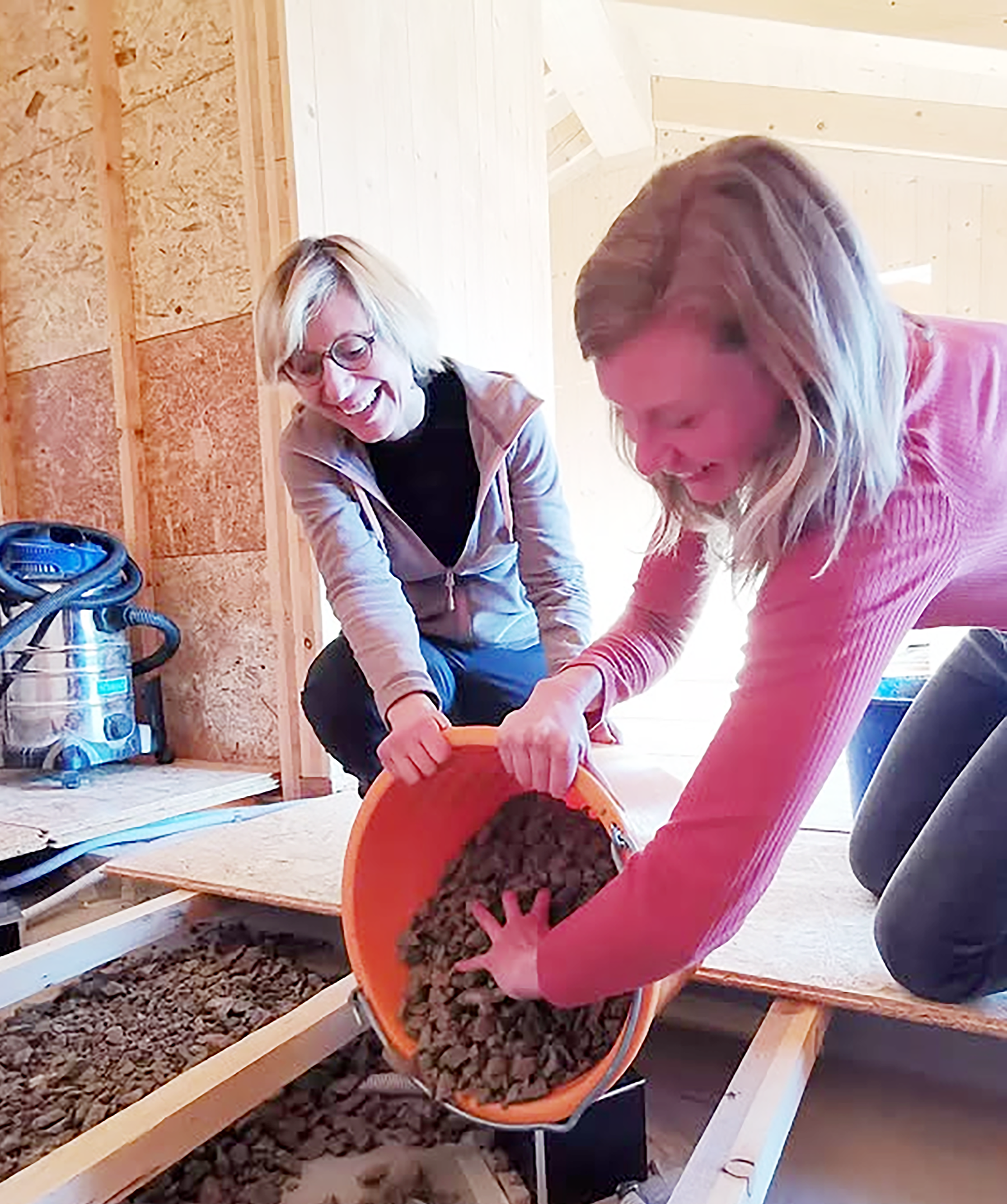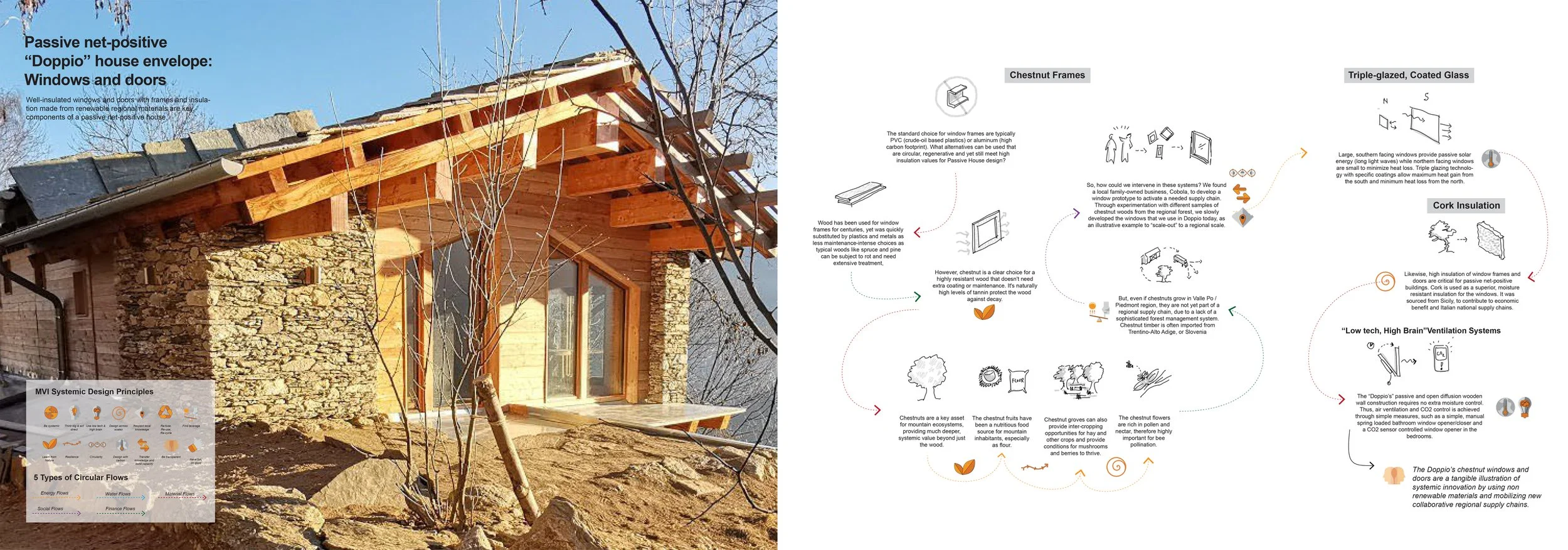MonViso Institute
Located in Ostana Italy, the MonViso Institute (MVI) is both a place and a state of mind: a living systems lab and bioregional weaving hub for regenerative systems design. My connection to MVI began serendipitously in 2019, when a chance encounter turned into volunteering, and later into pursuing my PhD, supervised by Director and Co-founder, Tobias Luthe. Since then, I’ve worked as a Design Associate, collaborating closely with Tobias and other colleagues on shaping the Institute’s strategic vision and practices. I’ve contributed to MVI through graphic design, systemic design visualizations, and architectural advising on the masterplan and il Doppio passive “net-positive” house, as well as co-designing and co-facilitating the Regenerative Design Talks on mountain life and regenerative futures.
Teaching and learning have been central to my journey at MVI. I co-taught across diverse contexts—undergraduate and graduate programs at institutions like ETH Zurich and Polytechnic of Turin, executive leadership training with Moncler’s Make Our Future program, and hands-on workshops for mountain communities. At the same time, I immersed myself deeply in the physical making of MVI: practicing regenerative farming and permaculture by sowing hemp fields, oiling cabinets, building chestnut staircases, crafting hemp insulation walls, preparing soundproofing for flooring, and stacking stone retaining walls. MVI is a living example of collective action and real-world impact, and I am deeply grateful to play a part in shaping it as much as it continues to shape me.
Collage illustrating Ostana’s complex layered histories and place identities, with the MonViso Institute in the upper-left corner—balancing traditional knowledge and innovative practices toward regenerative futures
Launched in 2019, the Regenerative Design Talks (RDT) are a collaborative workshop series exploring design, living systems, the built environment, and mountain identity. Engaging communities, students, and experts, they combine hands-on and discussion-based activities to build support for regenerative practices in the community of Ostana.
A gigamapping session with ETH Zurich PhD summer school participants and local community members exploring ways to increase circularity across water, energy, raw materials, and food systems in the Po Valley region
Image Source: Tobias Luthe
MVI Campus Masterplan showing circularity across ecological, material, socio-economic, and cultural systems, from permaculture landscapes to the “il Doppio” net-positive house. The campus includes eight buildings—lodge, cafeteria, workshop, art studio, observatory, and offices—currently being reconstructed from existing stone ruins.
As a plastic-free alternative, Dr. Silvia Barbero and I layered locally sourced limestone gravel under the second-story floorboards for sound insulation and thermal mass during a Polytechnic of Turin PhD workshop
Systemic design narratives, which I co-developed with Tobias Luthe, show how design decisions are embedded within larger social-ecological systems. This example illustrates how the regionally sourced windows and doors of the Il Doppio building are connected to local and regional supply chains, finances, cultural heritage and ecological benefits.
Shoveling goat manure on the hemp fields to prepare them for spring planting with Zurich University of Applied Sciences student course
Hosting a community theater event on regenerative futures, featuring regional actor Pino Petruzzelli at the MVI amphitheater
Planting apple trees in the MVI orchard with local community members Rashid Kaleem and Claas Beeser
Insulating the gap between chestnut wood three-pane window frames and the Doppio’s Nurholz cross-laminated timber walls with hemp fleece fiber










